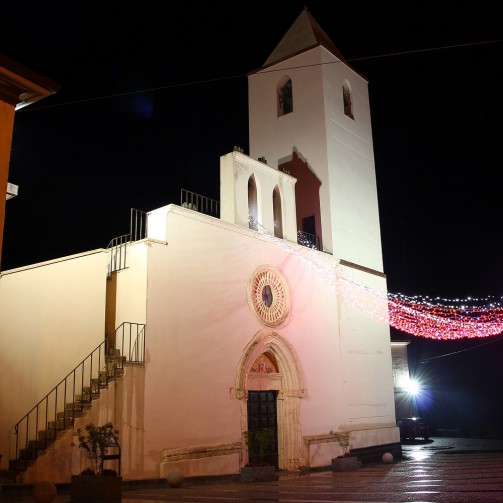It was built in two periods quite distinct from each other.
The first structure dates back to the fifth and sixth centuries AD (400-500): this was revealed by the latest restoration work carried out in 1996, when a Roman kiln used for baking bricks was found under the present chancel, completely intact inside and equally disfigured outside due to the weather.
The second structure comprising a larger structure, dates from the first half of the 14th century (1300s) and has Gothic forms, as can be seen from the large ogival doorway and the pointed arches of the interior.
Inside, the parish church has a single nave with six side chapels, of which the most interesting from a historical and architectural point of view is that of the Assumption, which was built at the behest of Salvatore Locci at the turn of the 17th .
XVIII century (late 1600s early 1700s).
Finally in the 1960s the high bell tower was added on the right side of the facade and the last chapel on the corresponding side.
In 1929 the chancel was enclosed by balustrades and housed an elegant gold-laminated Linnaean tempietto dated 1655 that was taken out in 1980, after several erroneous retouches, and replaced with the 1981 tempietto offered by local craftsmen.
After a few years of restoration, the old altar returned in 2001 .
2002.
St. Valentine’s Day is solemnly celebrated on Feb. 14, the patron’s own feast day on Oct. 6.
The feast was moved by the ancients due to the fact that they had no harvest in February and it was too cold.









